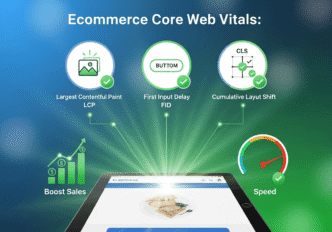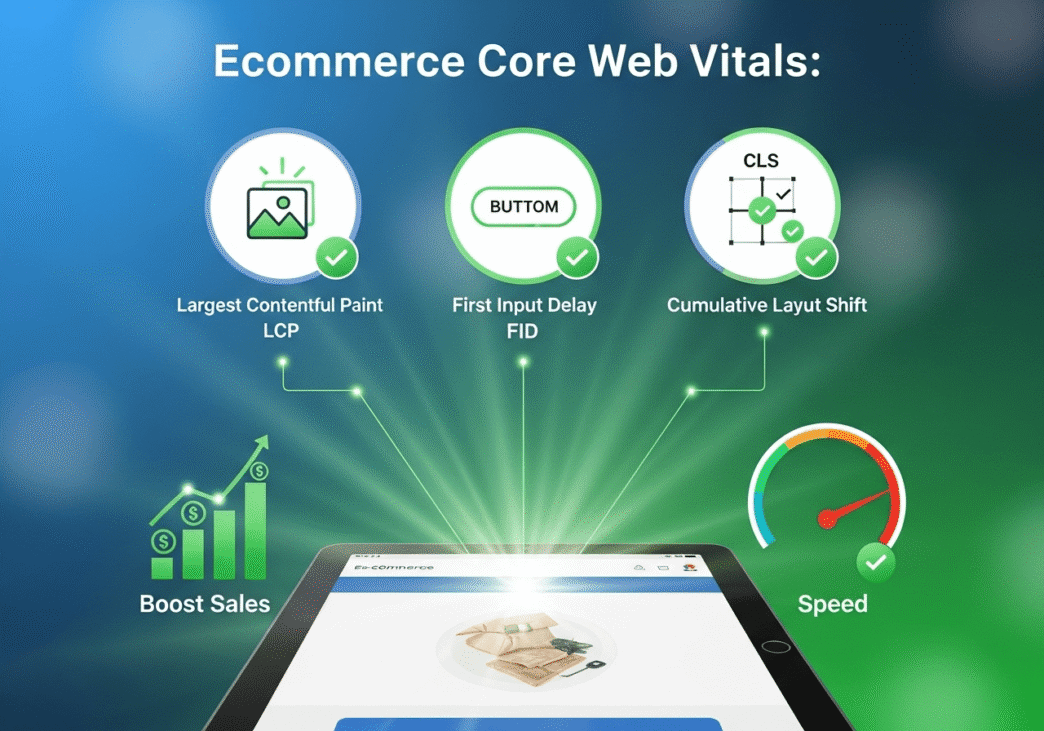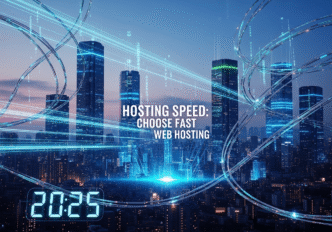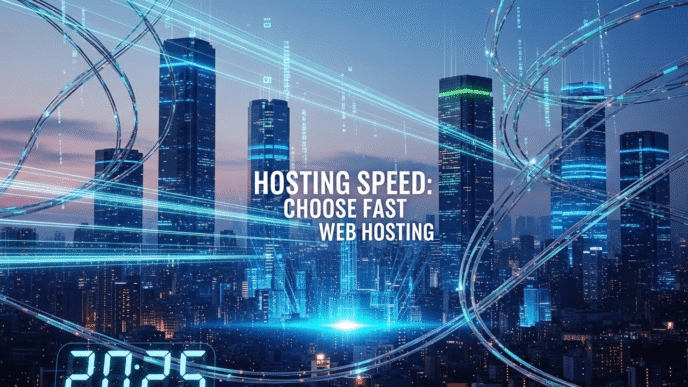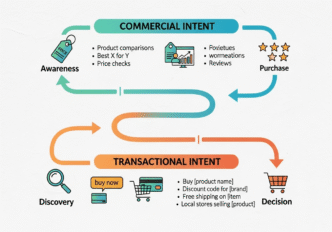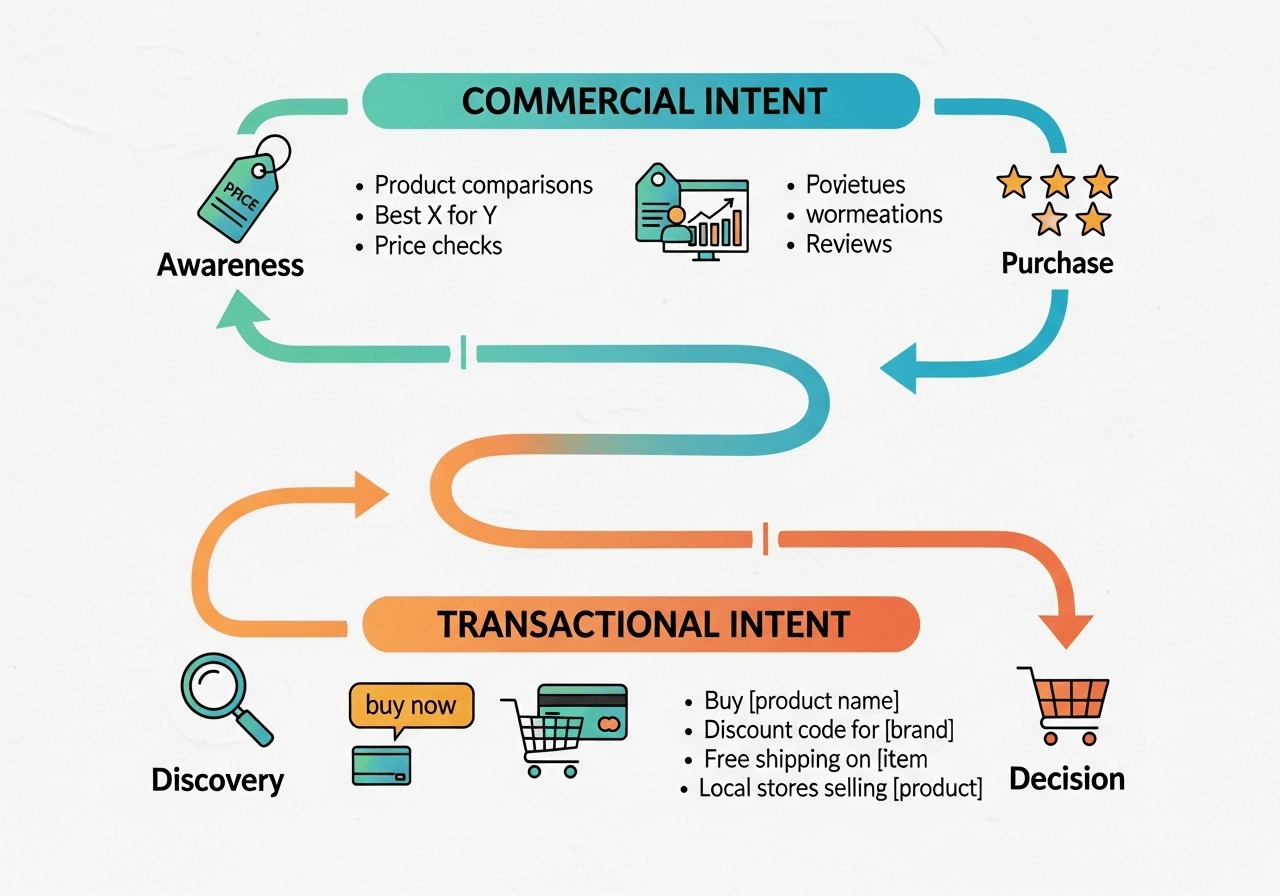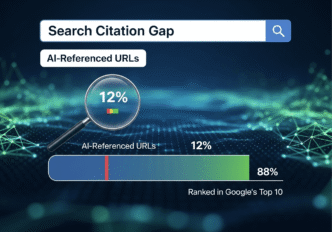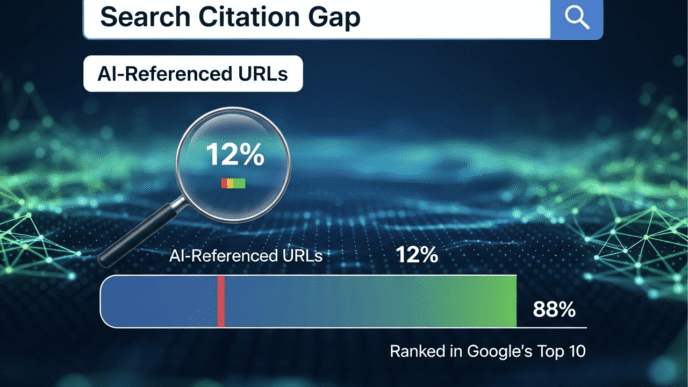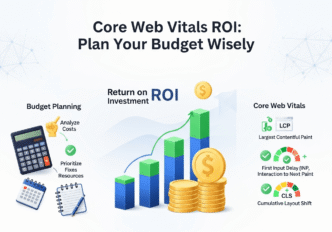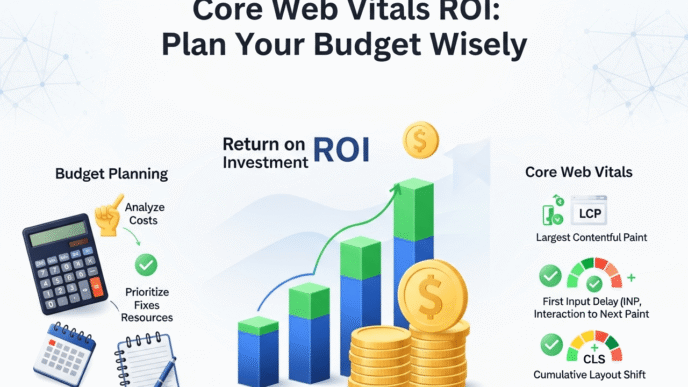Picture this: Your customer finds the perfect product, adds it to cart, proceeds to checkout, and then… waits. And waits. And waits some more. By the time your payment page finally loads, they’ve already ordered the same item from your competitor on Amazon. Ouch.
Welcome to the brutal reality of ecommerce Core Web Vitals, where every millisecond of delay can literally cost you money. It’s like having a beautiful brick-and-mortar store with a revolving door that moves at the speed of molasses – technically functional, but practically a sales killer.
Here’s the shocking truth: ecommerce optimization isn’t just about having great products and competitive prices anymore. Your online store performance can make or break your conversion rates, with studies showing that even a 100ms delay in page load time can decrease conversion rates by up to 7%. Ready to turn your slow online store into a conversion machine?
Table of Contents
Toggle
Why Are Ecommerce Core Web Vitals So Critical for Online Sales?
Ecommerce Core Web Vitals directly impact your bottom line in ways that other industries simply don’t experience. When someone’s trying to spend money on your site, every performance hiccup is a potential lost sale.
Core Web Vitals metrics affect ecommerce differently because:
- Purchase intent is immediate – customers won’t wait for slow pages
- Competition is just one click away – Amazon has trained users to expect instant gratification
- Trust is fragile – slow sites feel unreliable for financial transactions
- Mobile commerce dominates – over 70% of ecommerce traffic is mobile
The numbers don’t lie: online shopping experience quality directly correlates with revenue. Sites with excellent Core Web Vitals see 20-30% higher conversion rates than their poorly performing competitors.
Pro Tip: Ecommerce sites have the highest correlation between Core Web Vitals improvements and business results of any industry. Every optimization directly translates to revenue – making performance improvements some of the highest ROI activities you can do.
How Does Cart Abandonment Connect to Core Web Vitals Performance?
Cart abandonment rates average 70% across all ecommerce sites, and poor performance is a major contributor. It’s like watching customers walk into your store, fill up their shopping basket, then leave because the checkout line is too slow.
Performance-Related Abandonment Triggers:
- Slow product page loading (customers lose interest before seeing details)
- Checkout page delays (anxiety increases with every second of waiting)
- Payment processing lag (customers worry about security during delays)
- Mobile performance issues (frustrated mobile shoppers abandon faster)
- Layout shifts during checkout (accidental clicks on wrong buttons)
The Mathematical Reality:
Average Cart Value: $150
Abandonment Rate Improvement: 15% (from Core Web Vitals optimization)
Monthly Sessions: 50,000
Additional Revenue: $1,125,000 annually
Studies show that reduce cart abandonment with performance improvements can increase completed purchases by 15-25% on average.
Pro Tip: The checkout flow is where performance matters most. A 1-second delay during payment processing feels like an eternity to customers and dramatically increases abandonment rates.
What Makes Ecommerce Site Speed Optimization Different?
Ecommerce site speed optimization faces unique challenges that blog sites and corporate websites don’t deal with:
Complex Dynamic Content
- Real-time inventory updates
- Personalized recommendations based on browsing history
- Dynamic pricing and promotion calculations
- User account integration and wish lists
- Shopping cart state management across sessions
Third-Party Integration Overload
- Payment processors (PayPal, Stripe, Apple Pay)
- Analytics and tracking (Google Analytics, Facebook Pixel, heat mapping)
- Marketing tools (email capture, live chat, reviews)
- Security services (fraud detection, SSL verification)
- Shipping calculators and inventory management systems
High-Stakes User Journeys
Unlike content sites where a slow page might just annoy visitors, ecommerce speed issues directly impact:
- Purchase completion rates
- Customer lifetime value
- Average order value
- Return customer rates
- Brand trust and reputation
How to Optimize Product Pages Core Web Vitals for Maximum Conversions?
Product page optimization is where ecommerce Core Web Vitals optimization pays the biggest dividends. These pages are your digital salespeople – they need to be fast, smooth, and persuasive.
LCP Optimization for Product Pages
Largest Contentful Paint on product pages is usually the hero image. Here’s how to optimize it:
<!-- Optimized product image loading -->
<picture>
<source media="(max-width: 480px)" srcset="product-mobile.webp" type="image/webp">
<source media="(max-width: 768px)" srcset="product-tablet.webp" type="image/webp">
<source srcset="product-desktop.webp" type="image/webp">
<img src="product-fallback.jpg" alt="Product Name"
width="800" height="600"
loading="eager"
fetchpriority="high">
</picture>
Product Image Best Practices:
- Use WebP format with JPEG fallbacks
- Implement responsive images for different device sizes
- Preload hero images with
fetchpriority="high" - Optimize image compression (aim for 70-80% quality)
- Use proper dimensions to prevent layout shifts
FID/INP Optimization for Interactive Elements
Product pages are highly interactive. Optimize product pages Core Web Vitals by focusing on:
// Optimized add-to-cart functionality
class ProductPage {
constructor() {
this.initializeQuickInteractions();
}
// Optimize for fast interactions
initializeQuickInteractions() {
// Debounce quantity changes
this.quantityInput.addEventListener('input',
this.debounce(this.updatePrice, 100)
);
// Optimize add-to-cart button
this.addToCartBtn.addEventListener('click', (e) => {
// Immediate visual feedback
this.showLoadingState();
// Async cart update
this.addToCart(this.productId).then(() => {
this.showSuccessState();
});
});
}
debounce(func, wait) {
let timeout;
return function executedFunction(...args) {
clearTimeout(timeout);
timeout = setTimeout(() => func.apply(this, args), wait);
};
}
}
CLS Prevention for Product Galleries
Cumulative Layout Shift on product pages often comes from:
- Image galleries loading asynchronously
- Product recommendations appearing below the fold
- Dynamic pricing updates
- Inventory status changes
- Review widgets loading
Gallery Optimization Example:
/* Prevent layout shift in product gallery */
.product-gallery {
aspect-ratio: 1 / 1;
min-height: 400px;
display: grid;
grid-template-areas: "main thumbs";
}
.main-image {
grid-area: main;
width: 100%;
height: 100%;
object-fit: cover;
}
.thumbnail-list {
grid-area: thumbs;
display: flex;
flex-direction: column;
gap: 8px;
}
Checkout Optimization: Where Core Web Vitals Matter Most
Checkout optimization is the holy grail of ecommerce conversion rates. This is where performance anxiety meets purchase anxiety, creating a perfect storm for abandoned carts.
Critical Checkout Performance Factors
| Checkout Stage | Performance Priority | Common Issues | Optimization Focus |
|---|---|---|---|
| Cart Review | Medium | Slow cart calculations | Database query optimization |
| Shipping Info | High | Address validation delays | Async API calls |
| Payment | Critical | Payment processor loading | Preload payment scripts |
| Confirmation | Medium | Order processing time | Optimistic UI updates |
Checkout Flow Optimization Strategy
1. Minimize Checkout Steps
// Single-page checkout optimization
class CheckoutOptimizer {
constructor() {
this.preloadPaymentMethods();
this.enableProgressiveSaving();
}
// Preload payment processor scripts
preloadPaymentMethods() {
// Load Stripe/PayPal scripts in background
const script = document.createElement('script');
script.src = 'https://js.stripe.com/v3/';
script.async = true;
document.head.appendChild(script);
}
// Save form data as user types
enableProgressiveSaving() {
const formInputs = this.checkoutForm.querySelectorAll('input');
formInputs.forEach(input => {
input.addEventListener('blur', this.debounce(this.saveFormData, 500));
});
}
}
2. Optimize Payment Processing
- Preload payment scripts during cart review
- Use payment request APIs (Apple Pay, Google Pay) for faster checkout
- Implement guest checkout to reduce friction
- Show progress indicators during payment processing
- Use optimistic UI updates for immediate feedback
Pro Tip: The payment step is where customers are most sensitive to delays. Even perceived performance (loading animations, progress bars) can significantly reduce abandonment rates during actual processing time.
Real-World Case Study: Fashion Ecommerce Transformation
Let me share an incredible ecommerce Core Web Vitals optimization success story:
The Challenge: A mid-sized fashion ecommerce site was losing significant revenue due to poor mobile performance and high cart abandonment rates.
Initial Ecommerce Performance:
- Mobile conversion rate: 1.2%
- Cart abandonment rate: 78%
- Average page load time: 5.8 seconds
- Mobile bounce rate: 67%
- Monthly revenue: $450,000
Core Web Vitals Baseline:
- LCP: 4.8 seconds (Poor) – Hero images taking forever
- FID: 290ms (Poor) – Unresponsive add-to-cart buttons
- CLS: 0.31 (Poor) – Product images causing layout shifts
Problems Identified:
- Massive product images (2-5MB each) not optimized for mobile
- Slow product filtering causing unresponsive interactions
- Heavy third-party scripts blocking page rendering
- Checkout flow issues with payment processor delays
- Mobile-unfriendly layout with constant shifting elements
The Optimization Strategy:
Month 1: Product Page Optimization
- Image overhaul: Converted all images to WebP format
- Responsive image implementation: 4 different sizes for different devices
- Lazy loading optimization: Aggressive lazy loading for product grids
- Critical CSS inlining: Above-the-fold styles loaded immediately
Results After Month 1:
- LCP: 2.9 seconds (40% improvement)
- Mobile conversion rate: 1.6% (+33% improvement)
- Cart abandonment: 72% (8% improvement)
Month 2: Interaction and User Experience
- JavaScript optimization: Replaced heavy jQuery with vanilla JS
- Add-to-cart optimization: Instant visual feedback with async processing
- Product filtering: Debounced inputs with skeleton loading
- Mobile UX improvements: Touch-optimized interface elements
Results After Month 2:
- FID: 85ms (Good category)
- Mobile bounce rate: 52% (22% improvement)
- Pages per session: +45% improvement
Month 3: Checkout Flow Transformation
- Single-page checkout: Reduced from 4 steps to 1 step
- Payment script preloading: Loaded payment processors in background
- Form optimization: Progressive saving and smart validation
- Layout stability: Fixed all checkout-related layout shifts
Results After Month 3:
- CLS: 0.06 (Good category)
- Checkout completion rate: +38% improvement
- Payment processing speed: 60% faster
Month 4: Advanced Optimization and Monitoring
- Personalization optimization: Smart product recommendations
- A/B testing: Different optimization approaches
- Performance monitoring: Real-time alerts for regressions
- Mobile-first refinements: Device-specific optimizations
Final Results After 4 Months:
Core Web Vitals Performance:
- LCP: 1.8 seconds (Good – 62% improvement)
- FID: 75ms (Good – 74% improvement)
- CLS: 0.06 (Good – 81% improvement)
Business Impact:
- Mobile conversion rate: 2.4% (+100% improvement)
- Cart abandonment rate: 58% (26% improvement)
- Average order value: +23% increase
- Monthly revenue: $680,000 (+51% increase)
- Customer satisfaction: +67% improvement in support ratings
The Revenue Breakdown:
- Additional monthly revenue: $230,000
- Annual revenue impact: $2.76 million
- Return on optimization investment: 1,840%
- Customer lifetime value: +34% improvement
Pro Tip: The biggest insight was that mobile optimization drove desktop improvements too. When they optimized for the most constrained environment (mobile), it naturally improved the experience across all devices.
Ecommerce Conversion Rates: The Performance Connection
Improve ecommerce conversion rates through Core Web Vitals optimization using this data-driven approach:
Conversion Rate Correlation by Metric
| Core Web Vital | Conversion Impact | Revenue Impact | Customer Retention |
|---|---|---|---|
| LCP < 1.5s | +35-50% conversion rate | +40-60% revenue | +25% repeat purchases |
| FID < 100ms | +20-30% conversion rate | +25-40% revenue | +20% repeat purchases |
| CLS < 0.1 | +15-25% conversion rate | +20-35% revenue | +30% customer satisfaction |
Industry Benchmarks for Ecommerce
Performance Targets by Ecommerce Category:
- Fashion/Apparel: LCP < 2.0s, FID < 100ms, CLS < 0.08
- Electronics: LCP < 1.8s, FID < 80ms, CLS < 0.06
- Home/Garden: LCP < 2.2s, FID < 120ms, CLS < 0.10
- Beauty/Health: LCP < 1.9s, FID < 90ms, CLS < 0.07
Advanced Conversion Optimization Techniques
1. Performance-Based Personalization:
// Adapt experience based on device performance
class PerformancePersonalization {
constructor() {
this.deviceCapability = this.assessDevice();
this.adaptExperience();
}
assessDevice() {
const memory = navigator.deviceMemory || 4;
const connection = navigator.connection?.effectiveType || '4g';
if (memory >= 8 && connection === '4g') return 'high';
if (memory >= 4 && connection !== 'slow-2g') return 'medium';
return 'low';
}
adaptExperience() {
switch(this.deviceCapability) {
case 'high':
this.enablePremiumFeatures();
break;
case 'medium':
this.enableStandardFeatures();
break;
case 'low':
this.enableLightweightExperience();
break;
}
}
}
2. Smart Resource Loading:
// Prioritize critical ecommerce resources
const resourcePriorities = {
productImages: 'high',
addToCartButton: 'high',
priceDisplay: 'high',
recommendations: 'low',
reviews: 'low',
socialProof: 'medium'
};
// Load resources based on priority
Object.entries(resourcePriorities).forEach(([resource, priority]) => {
loadResource(resource, priority);
});
Online Shopping Experience: Mobile vs Desktop Optimization
Online shopping experience optimization requires different strategies for different devices:
Mobile-First Ecommerce Optimization
Mobile Shopping Behavior:
- Impulse purchases dominate mobile transactions
- Touch interactions require larger target areas
- Thumb-friendly navigation is crucial
- One-handed usage patterns affect UX design
- Distraction-prone environment demands immediate engagement
Mobile Optimization Checklist:
- Product images: Optimized for small screens but retina-ready
- Add-to-cart buttons: Large, thumb-accessible, with haptic feedback
- Search functionality: Autocomplete, voice search, visual search
- Payment options: One-click checkout, digital wallets, biometric auth
- Navigation: Simplified menu structure, persistent cart icon
Desktop Ecommerce Advantages
Desktop Shopping Benefits:
- Larger screens allow for more product information
- Multiple tabs enable easy comparison shopping
- Keyboard shortcuts can speed up power users
- Detailed product views with zoom functionality
- Complex filtering options work better on larger screens
Pro Tip: Design for mobile constraints first, then enhance for desktop capabilities. This ensures your core experience works everywhere while taking advantage of larger screens where available.
Ecommerce Core Web Vitals Tools and Monitoring
Essential tools for ecommerce optimization monitoring:
| Tool Category | Best Tools | Ecommerce Focus | Key Metrics | Cost |
|---|---|---|---|---|
| Performance Testing | PageSpeed Insights, WebPageTest | Product page analysis | LCP, FID, CLS | Free |
| Real User Monitoring | Google Analytics, New Relic | Conversion correlation | Business metrics + vitals | Free/Paid |
| Ecommerce Analytics | Google Analytics 4, Adobe Analytics | Revenue tracking | Conversion funnels | Free/Paid |
| A/B Testing | Optimizely, Google Optimize | Performance impact | Conversion rate lift | Paid |
| Error Monitoring | Sentry, LogRocket | Checkout issues | Error rate correlation | Paid |
Custom Ecommerce Monitoring Setup
// Track Core Web Vitals with ecommerce context
import {getCLS, getFID, getLCP} from 'web-vitals';
class EcommerceVitalsTracker {
constructor() {
this.trackWithBusinessContext();
}
trackWithBusinessContext() {
// Track LCP with product context
getLCP((metric) => {
gtag('event', 'core_web_vitals', {
metric_name: 'LCP',
metric_value: metric.value,
page_type: this.getPageType(),
product_category: this.getProductCategory(),
user_segment: this.getUserSegment()
});
});
// Correlate vitals with business metrics
this.trackConversionCorrelation();
}
trackConversionCorrelation() {
// Track if user converts after good/poor performance
window.addEventListener('beforeunload', () => {
const sessionData = {
purchased: this.hasPurchased(),
cart_value: this.getCartValue(),
performance_score: this.getAverageVitalsScore()
};
navigator.sendBeacon('/analytics/conversion-correlation',
JSON.stringify(sessionData));
});
}
}
Common Ecommerce Core Web Vitals Mistakes to Avoid
Learn from these costly ecommerce optimization mistakes:
Mistake 1: Ignoring Mobile Performance
The Problem: Focusing on desktop optimization while mobile users suffer. The Impact: 70% of ecommerce traffic is mobile – poor mobile performance kills sales. The Solution: Mobile-first optimization approach with desktop enhancement.
Mistake 2: Over-Engineering Product Pages
The Problem: Adding too many features that slow down core functionality. The Impact: Customers can’t complete basic actions like adding items to cart. The Solution: Performance budgets and critical path optimization.
Mistake 3: Checkout Flow Complexity
The Problem: Multi-step checkouts with heavy performance overhead. The Impact: Higher abandonment rates at the most critical conversion point. The Solution: Single-page checkout with progressive enhancement.
Mistake 4: Third-Party Script Overload
The Problem: Adding every marketing and analytics tool without performance consideration. The Impact: Scripts block user interactions and slow page loading. The Solution: Script auditing, async loading, and performance monitoring.
Pro Tip: Every feature, widget, or script you add to your ecommerce site should pass the “revenue test” – does it generate more money than it costs in performance degradation and lost conversions?
The Future of Ecommerce Performance
Ecommerce site speed optimization is evolving rapidly:
Emerging Technologies
- Edge computing for faster global performance
- AI-powered optimization for automatic performance tuning
- Progressive Web Apps for app-like ecommerce experiences
- WebAssembly for complex ecommerce calculations
- HTTP/3 for faster resource loading
Changing User Expectations
- Instant loading becoming the baseline expectation
- Offline functionality for interrupted shopping sessions
- Voice commerce optimization for smart speakers
- Augmented reality product previews
- Biometric checkout for seamless payments
Performance as Competitive Advantage
- Speed as a differentiator in crowded markets
- Performance-based pricing strategies
- Site speed guarantees as marketing tools
- Performance transparency in customer communications
Your Ecommerce Core Web Vitals Action Plan
Ready to transform your online store performance? Here’s your revenue-focused roadmap:
Week 1: Revenue Impact Assessment
- Audit current performance using Google Search Console
- Calculate potential revenue impact based on conversion improvements
- Identify highest-traffic product and checkout pages
- Set up comprehensive tracking for performance and business metrics
Week 2: Product Page Optimization
- Optimize product images for mobile and desktop
- Implement responsive image loading strategies
- Fix layout shifts in product galleries and descriptions
- Optimize add-to-cart functionality for fast interactions
Week 3: Checkout Flow Enhancement
- Streamline checkout process to minimize steps
- Preload payment processor scripts
- Implement progressive form saving
- Optimize mobile checkout experience specifically
Week 4: Monitoring and Iteration
- Analyze performance improvements impact on conversions
- A/B test different optimization approaches
- Set up automated alerts for performance regressions
- Plan ongoing optimization strategy based on results
Remember, ecommerce Core Web Vitals optimization is directly tied to your revenue. Every millisecond of improvement can translate to real dollars in your bank account. The sites that prioritize performance will increasingly dominate their markets as user expectations continue to rise.
The connection between site speed and sales isn’t just correlation – it’s causation. Fast sites sell more because they provide better user experiences, build more trust, and remove friction from the buying process.
Want to dive deeper into the technical aspects of Core Web Vitals optimization that can transform your ecommerce performance? Understanding both the business and technical sides is crucial for maximizing your optimization ROI.
What’s been your biggest ecommerce performance challenge? Share your conversion improvement stories (or struggles) in the comments below!

